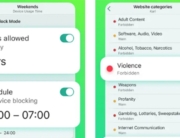As pupils progress through college, they’ve been anticipated to show increasing degrees of elegance within their language and reading abilities across all content areas. So that you can gain knowledge through separate reading and be involved in meaningful conversations within the class, pupils must master the complex terms and expressions that characterize the language of college. Proficiency in these abilities, otherwise referred to as educational language, is crucial for reading comprehension and general success that is academic.
around the world, educators and policymakers have started to acknowledge the significance of educational language, in addition to its absence that is notable from and assessment. Present national and state requirements mirror a change towards educational language by calling for instructional give attention to words that appear across content areas, in addition to possibilities for pupils to produce understanding of terms and principles through conversation and reading (Baker et al, 2014). Students should be in a position to figure out the meaning of unknown words, comprehend nuances in term definitions and numerous meaning terms, and use advanced phrases and words, including transitions and accurate term option (nationwide Governors Association Center for recommendations & Council of Chief State School Officers, 2010). These needs are specially challenging for students with impoverished experience or limited contact with English.
numerous pupils have trouble with academic language because their visibility to language outside of college doesn’t add words that are advanced expressions. The transition to talk that is“school poses a certain challenge for English Language Learners (ELLs) because they must simultaneously develop everyday language currently familiar for their monolingual peers, along side educational language abilities (O’Brien and Leighton, 2015). Without contact with advanced level English language abilities at house, ELLs face twice as much demands of language learning. More and more ELL pupils going to schools in the united states, along with significant variety of pupils from low earnings backgrounds and the ones with learning disabilities, are making it a academic imperative that instruction and evaluation straight promote students’ scholastic language proficiency.
What’s Academic Language?
The word language that is academic be used to make reference to formal English guidelines, framework, and content for educational dialogue and text, while the communicative conventions that allow pupils to meet up the needs of college surroundings. a succinct meaning relates to language that is academic “the specific language, both dental and written, of educational settings that facilitates communication and considering disciplinary content” (Nagy & Townsend, 2012). These specialized language skills include advanced vocabulary and syntax that help students unlock key elements of both oral and written language for actionable, instructional purposes. These abilities support the listener or audience in gaining a rich knowledge of the message being delivered.
Exactly what are important elements of Academic Language?
Vocabulary and knowledge that is syntactic dental and written language encompass certain skills that enable students to generally meet educational needs throughout the curriculum. Though widely used to denote breadth of real information of term definitions (in other terms., what number of terms a student understands), language knowledge additionally identifies level of comprehension of term parts (prefixes, suffixes, origins), numerous definitions, and figurative language that shape the subtleties of language usage. Proficiency in term components and relationships helps pupils get new vocabulary, explanation concerning the meaning of unfamiliar terms, and understand the advanced vocabulary that characterizes educational language, including:
Morphologically complex terms (words with numerous parts, including prefixes and suffixes) e.g., comfortable; forecast; reconciliation
General-academic terms which can be high regularity that can be abstract or have multiple definitions, e.g., research; concept; asylum
Discipline-specific terms that typically have Greek forms that are combining e.g., ecosystem; longitude; integer
Syntactic knowledge means the comprehension of elements of message and guidelines that govern just just exactly how phrases and words combine into sentences, and exactly how sentences combine into paragraphs. To grasp linked text, pupils must master fundamental rules that are grammatical well as advanced understanding of phrases and words being used to ascertain referents, arrange some ideas, denote relationships between ideas, and develop text cohesion, including:
Utilization of connective terms requiring sentence-level inferencing, e.g., consequently; whereas; similarly
Resolution of pronoun guide, e.g., We examined the degree to which native flowers in seaside regions adapted to climatic changes in their environment. (The audience has to link the pronoun their into the noun indigenous flowers)
Grammatical contract between topics, verbs, and tight, e.g., All of this applicants, plus the present President, are going to the televised debate.
eliteessaywriters.com/blog/how-to-write-an-introduction-paragraph sign up
offered the increasing focus on students’ abilities to separately engage complex text, possibly the domain many relying on students’ scholastic language abilities because they progress through school is reading comprehension. In reality, researchers have shown that reading comprehension problems have been in big component as a result of students’ challenges in knowing the language that is academic of texts (Uccelli et al, 2015). Vocabulary knowledge particularly predicts students literacy that is, given that it contributes notably to both term recognition and reading comprehension abilities. In addition, language and knowledge that is syntactic demonstrated an ability to account fully for nearly all individual variations in learning comprehension performance for pupils in top primary college through senior high school (Foorman, Koon, Petscher, Mitchell, & Truckenmiller, 2015). Vocabulary knowledge and knowledge that is syntactic students engage with text and progress towards deep reading comprehension with increasing freedom by supporting their abilities to:
Acquire knowledge through reading and synthesize it with formerly learned product
Analyze market, framework, function, and tone of texts
Evaluate evidence, primary tips, and details with what they read
How will you show Academic Language?
Instruction in educational language supports pupils’ use of content across all subject matter. As the functions and structures of students home that is can considerably affect their reading comprehension, even if their very very first language is English (Westby, 2005), this instruction should be explicit and structured. Making use of language through the curriculum, educators of most procedures can offer pupils with duplicated experience of and application of high-utility vocabulary terms, both general-academic and discipline-specific, instruction in word-learning methods and term relationships, and exercise with complex forms that are syntactic.
to be able to optimize the effect of educational language instruction, educators have to understand their students first’ certain language competencies. Educators should assess students’ understanding of term associations, utilization of structural analysis, and abilities to produce connections and inferences within and across sentences. In addition, assessing both educational language and reading comprehension skills through usage of authentic educational texts can help educators to recognize pupils whom need support coordinating vocabulary and syntactic knowledge with comprehension techniques. By evaluating pupils’ skills before, during, and after teaching educational language, educators can gather actionable information that can help recognize which pupils will tend to be effective or in danger for educational trouble and exactly just exactly what areas to focus on in instruction.






